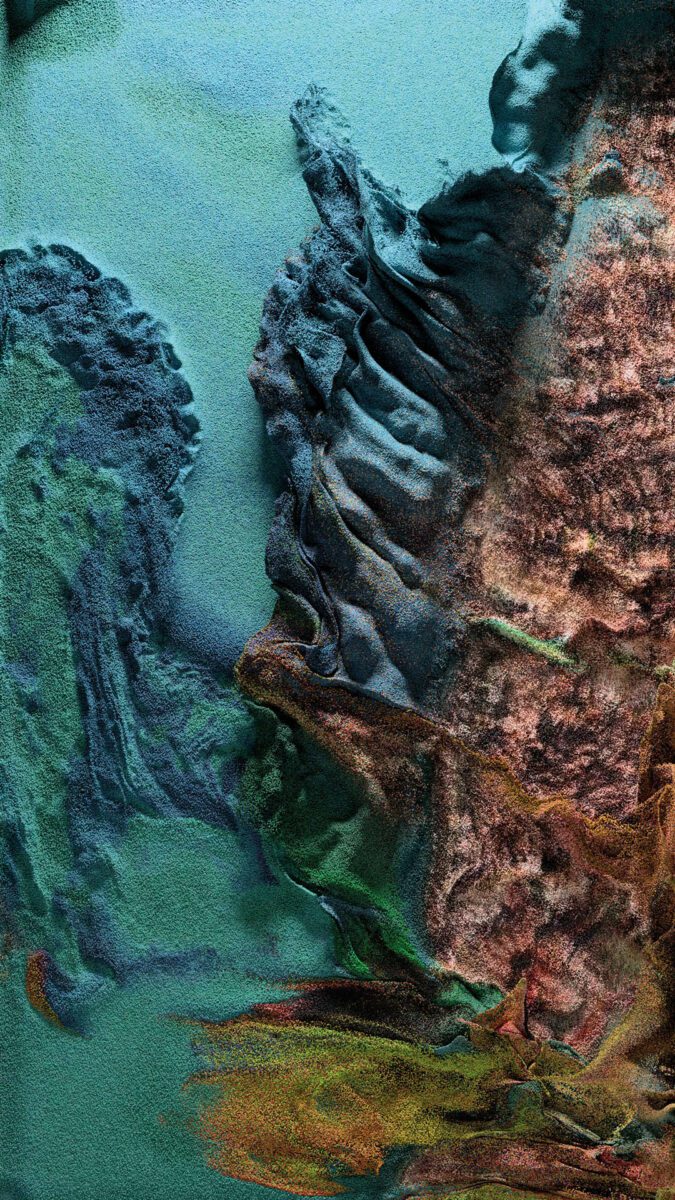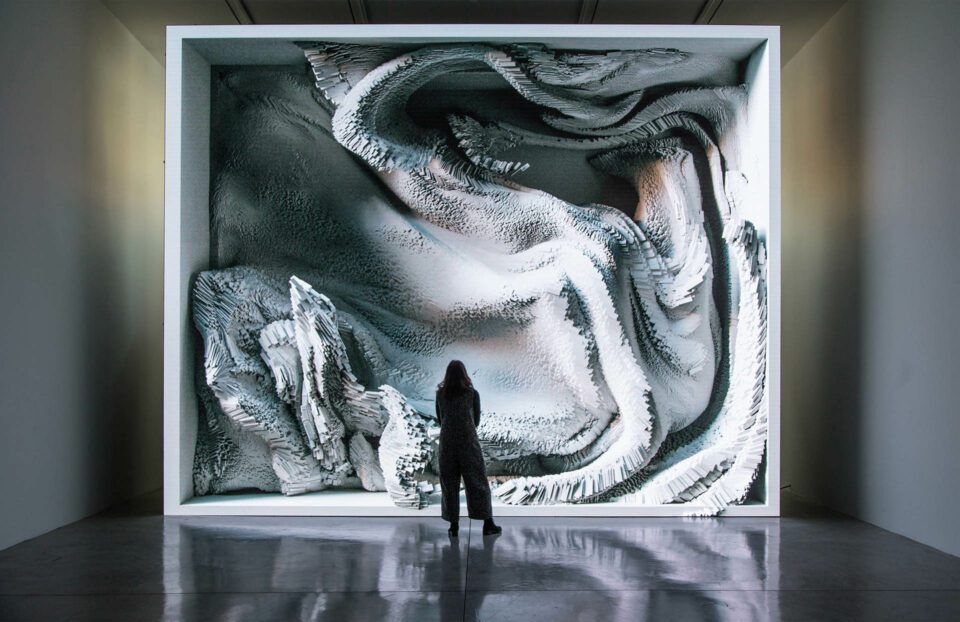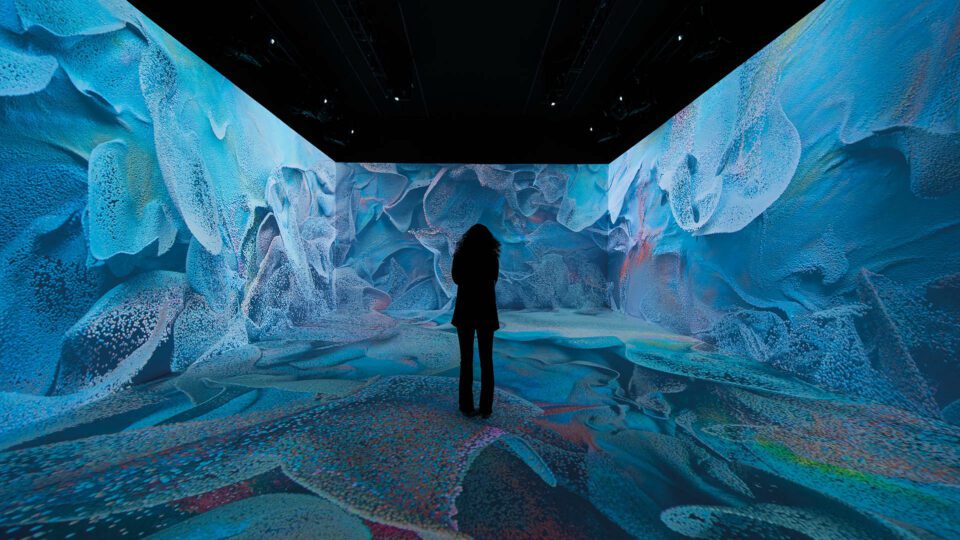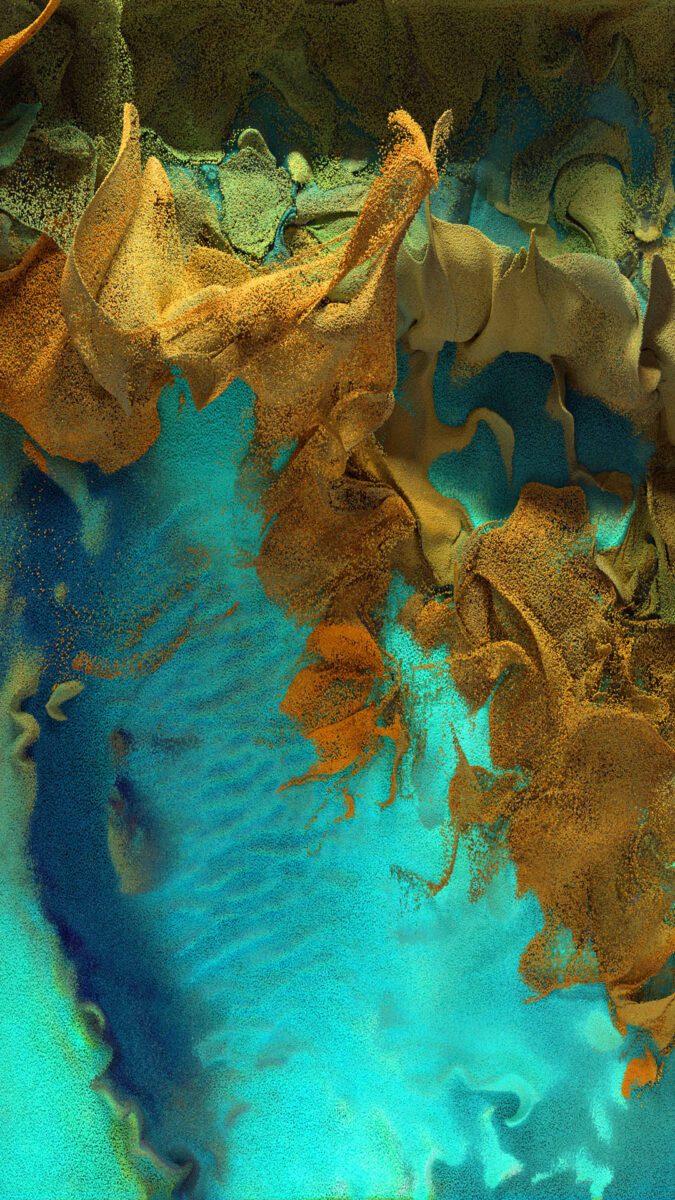The use of machine intelligence continues to increase de- bates about the definition – and future – of visual culture. Recent headlines have been dominated by OpenAI’s chatbot ChatGPT, which launched in November 2022. The language model is trained to provide responses to instructions, from summarising articles to writing poetry and creating prompts for AI art. The app has reached over 100 million users, as of February 2023, becoming the fastest growing app in history.
The same platform announced DALL-E 2 in April 2022. This deep learning model is designed to generate realistic digital images at a user’s command, joining other notable programs like Stable Diffusion and Midjourney. The latter sparked debate when Jason Allen won the Colorado State Fair Fine Arts Exhibition, August 2022, with an artwork largely generated by AI. The piece Théâtre D’opéra Spatial imitated human-made art to such an extent that the judges couldn’t determine its origins. The achievement called into question the authenticity of the work as a “serious” medium. In an article for The Washington Post, artificial intelligence journalist Drew Harwell claimed it had “fuelled deeper fears: of deci- mating people’s creative work and … smothering human art.”
Media artist and director Refik Anadol (b. 1985) takes a different approach. The Türkiye-born, Los Angeles-based artist is at the forefront of new media and machine intelligence. He uses algorithms to extract and compile information from images and text available online – public metadata – to generate immersive and interactive experiences. These installations propose a world where AI can visualise an individual’s wildest fantasies, dreams and theories. Anadol addresses the fundamental partnership between human and machine in an interview with The NFT Magazine, stating his work is “one of the most powerful ways of using machines as a collaborator.”

Glacier Dreams (2023), for example, created a collective visual memory of the world’s most beautiful glaciers. The project, commissioned by Swiss bank Julius Baer, highlights the environmental threat posed by the climate crisis. The artist turned to the history of human creativity in Unsupervised (2022), open at MoMA, New York, until 15 April. AI was trained to interpret an extensive catalogue of almost 200,000 modern and contemporary works built up over 200 years – from the swirling landscapes of Vincent van Gogh to to surrealist paintings by Salvador Dalí and photography from Wolfgang Tillmans. A machine-learning model “visits” the collection, then presents its interpretation on-screen. Technology and creativity meet in a world where AI “dreams.”
The artist’s focus is now on meteorological data. Winds of Denmark (2023) has been produced for a new installation at ARKEN Museum of Modern Art, translating information from Ishøj’s mesmerising beach park into enchanting worlds. The project is one of three installations, shown alongside Nature Dreams (2021), an immense data sculpture arising from millions of images of forests, plains, sunsets and waterfalls. For Anadol, the possibilities of collaboration with AI are infinite.
A: Your work visualises the invisible – creating tangible art- works from data sources. What drew you to this concept? RA: Data as a medium or as a material is beyond just ones and zeros. Data is more than numbers. I look at them as memories, as the meaningful clusters of important moments transformed into digital entities and stored in the mind of a machine. When we focus on collective memories, we find something we all care about – detach ego from data and you are left with something very fresh and important for the future of humanity from the perspective of history-making. I am continuously captivated by the intersection of solid architecture and intangible elements – the data points that surround us and the flexibility of memory. Every work that I have completed to date bears the traces of this fascination.

A: Throughout your practice, there are references to AI’s capability to dream or hallucinate – having a form of conscience. Where does your interest in this come from?
RA: Since 2016, I have been conducting interdisciplinary research on the relationship between the human mind, architecture and aesthetics – designed to speculate responses to this question: if machines can “learn” or “process” individual and collective memories, can they also dream or hallucinate about them? For me, this ability is equally fascinating, as “machine hallucinations” evidence the relationship between creativity and learning. The more it perceives, the better it becomes at creating recognisable and sensible content, even in its dreaming state. The neural network of this computerised mind is my collaborator, and I translate these dreams into site-specific parametic AI data sculptures and installations.
A: Melting Memories (2018) is described as a creative vision of “recollection.” Why is remembering important?
RA: This work presents a visual interpretation of motor movements inside the human brain, using data that measured changes in brain wave activity over time. The title draws attention to the melting of neuroscience and technology into philosophical debates on memory. This new discourse puts AI in dialogue with individual and collective memories. For me, this idea is key to inventing the language of human- ity. When our actions can be predicted by various software, and diseases like dementia and Alzheimer’s still cannot be cured, the most precious and personal data is our memories.
A: Winds of Denmark (2023) at ARKEN translates meteorological information from Ishøj into mesmerising visuals. How did you come up with this idea? How do algorithms translate real-time data into immersive installations?
RA: Our worldview is becoming increasingly digitally rooted, and the boundaries between nature and technology are blurring. Winds of Denmark was specifically designed for ARKEN viewers, connecting them with patterns of invisible natural events around them. This work, like others from this series – including Winds of Boston (2017) and Winds of Singapore (2023) – harnesses a vast dataset from real-time API weather sensors. Data on wind speed, direction, gust patterns and temperature is transformed into experimental motion aesthetics. It is a unique interpretation of the fluidity of interactions between the environment and the city of Ishøj.

A: The exhibition Unsupervised at MoMA trained AI to interpret a catalogue of almost 200,000 modern and contemporary works spanning 200 years. How does this project speak to – or depart from – previous projects?
RA: AI is often used to classify, process and generate realistic representations of the world. Contrastingly, Unsupervised is visionary: it explores fantasy, hallucination and irrationality. It creates an alternate understanding of artmaking. The work not only pulls the viewer into a strange world of collective art histories, as imagined by a dreaming machine, but it also provides a moment of meditation on new modes of percep- tion and sensation. You can see it speculating as it unfolds: how to create an abstract picture. How to deal with inventing new colours. Even the question – why? – is considered, the same problems artists have confronted for over 200 years.
A: AI art generators and design automation tools are increasingly accessible online. How do you think these processes will influence human creativity in the future?
RA: When I started my journey, there was almost nothing available. Six years in AI is like 60 years in innovation. Open AI’s release of DALL-E 2 was an exciting development. Now, more than five billion parameters of AI can use a multi-mod- el approach. Moving from text to image is not a dream any- more. These machines are incredibly inspiring and will chal- lenge creative minds. I’m excited and happy to share what AI means for creativity and how it can be used for good. In the future, people will become the creators of creators, direc- tors of directors and the writers of writers. This is the next era.

A: Immersive spaces have seen a huge rise in popularity. Why are they so enthralling? What draws audiences in?
RA: Immersive concepts have been evolving since the 1970s, so the notion itself isn’t new. However, AI and data now have a huge role to play, and this addition makes it extremely fresh. Cinema has been a part of our lives for decades, and every practitioner has imagined creating new worlds. Now, this process is not surface-level. It becomes three-dimensional, an experience you can step into, feel and touch. These multi- sensory worlds are both timely and profoundly inspiring.
A: These technological and creative advances with AI also raise questions about today’s understanding of visual culture. You see the use of new intelligence as a form of “collaboration.” Can you expand on this idea?
RA: The idea of working with AI is a concept we use to implement more ethical ways of collecting and engaging with publicly available data. Generative AI models productively fuel artistic discovery, allowing us to think more reflectively about data collection. For Glacier Dreams, we were collecting images by travelling to Iceland instead of using trained datasets. This approach provides more creative authority over the artwork and offers a case study to address some ethical issues regarding AI-generated content. I am hopeful for a future where symbiotic relationships with machines offer us greater insights, knowledge and power to advance humanity.
A: How do you see the relationship between art, tech- nology and science developing going forward? Can these subjects combine to improve the present-day world?
RA: Yes, one hundred percent. The cross-sections of these mediums will make humanity better. I am optimistic about the future of generative AI because of its potential to enhance our cognitive capacities. The overlap will not only provide new realities but also different methods to experience our surroundings. However, there are still problems to address and qualities to enhance. We need to turn it into a mirror that reflects the collective consciousness of humanity.
Words: Megan Jones
Nature Dreams, ARKEN Museum of Modern Art, Denmark. Until 27 August.
Image Credits:
1. Refik Anadol, Machine Hallucinations, ISS Dreams A, (2020). © Refik Anadol Studio.
2. Refik Anadol, Machine Hallucinations, ISS Dreams C, (2020). © Refik Anadol Studio
3. Refik Anadol, Melting Memories 01, (2018). © Refik Anadol Studio.
4. Refik Anadol, Machine Memoirs, Space 05, (2022). © Refik Anadol Studio.
5. Refik Anadol, Machine Memoirs, MRO Dreams 01, (2020). © Refik Anadol Studio.





